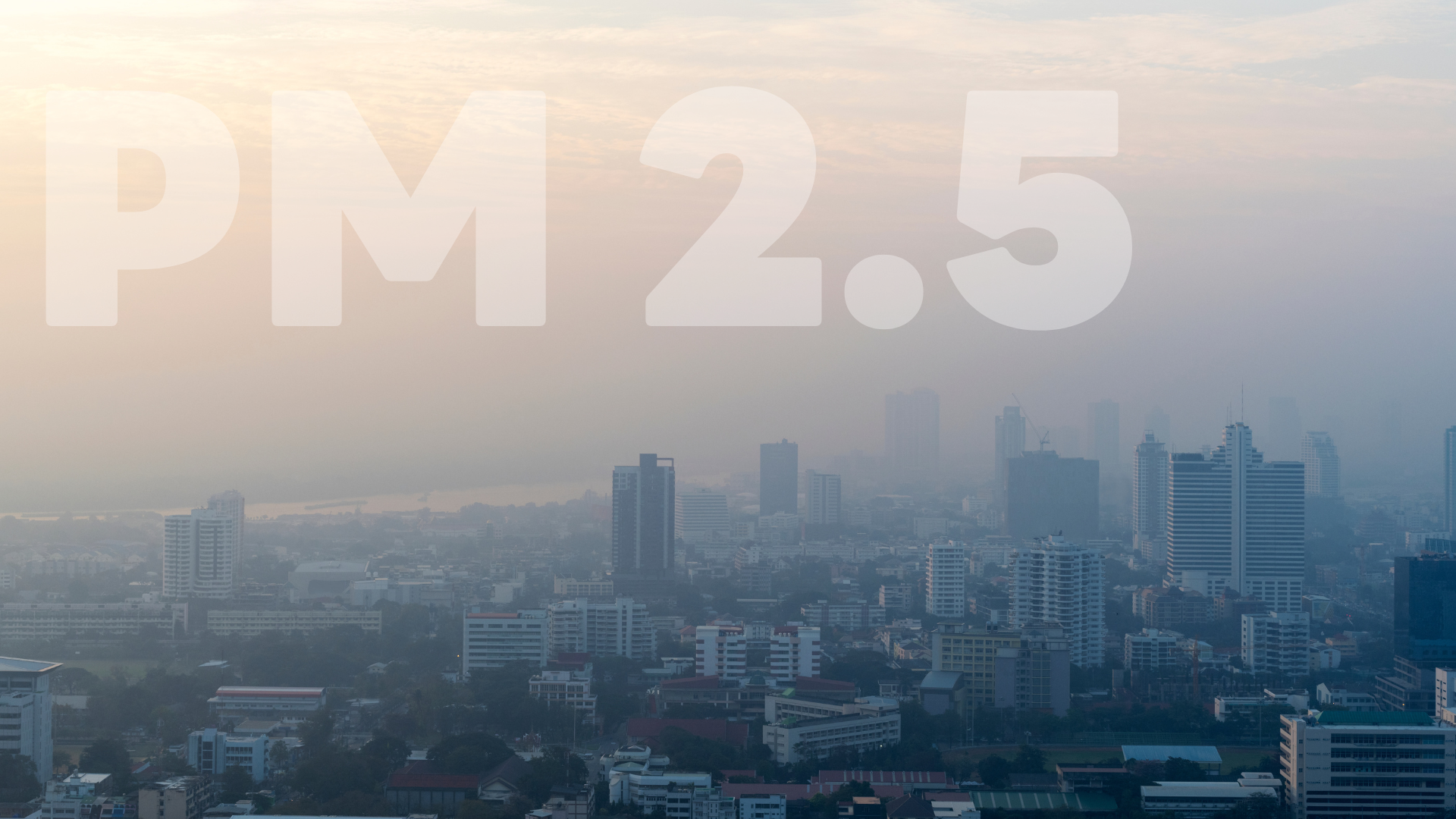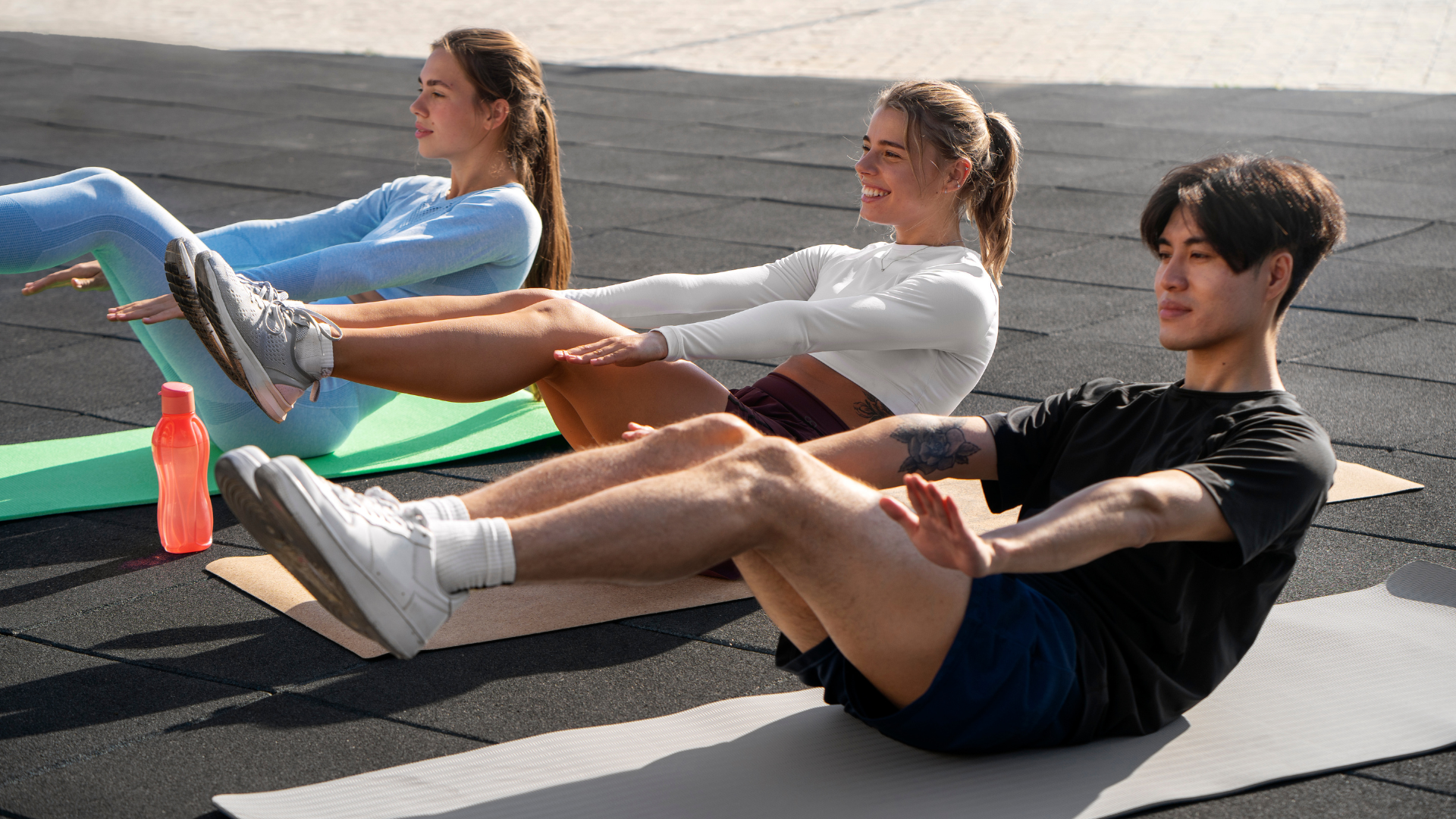"Weapons Against Toxic Smog: Medical Approaches to Combat PM2.5 Pollution"

Each morning, we step out of our homes, energized and determined to tackle the day ahead. Yet, that optimism can quickly fade when we are confronted by an unsettling sight: a hazy, smoky skyline. At first glance, it may resemble a serene path to heaven—but as our bodies respond with coughing, sneezing, tearing eyes, and shortness of breath, reality sets in. What lies before us is not serenity, but an unavoidable public health hazard: PM2.5 air pollution.

These ultrafine particles can penetrate deep into the body, causing more harm than we might expect. They do not merely damage the respiratory system but also ignite widespread inflammation throughout the body, potentially leading to serious conditions such as stroke, heart disease, and various forms of cancer—not just lung cancer. Furthermore, this toxic dust affects the nervous system and may impair brain development and function, especially in young children and the elderly—those most vulnerable.
Each time we witness the white haze of PM2.5 pollution, we are reminded of the severity of the issue and the urgent need for all sectors involved to take serious and sustained action. Yet, once the haze fades, most people return to their usual routines. Public concern gradually diminishes—until the dangerous smog inevitably returns the following year, often more intense than before.
This is where lifestyle medicine comes in—offering solutions at the downstream end, especially by encouraging self-care and community engagement. It works by strengthening the body to resist the chronic inflammation caused by toxic dust, protecting key systems such as the lungs, heart, and brain.
Nutrition to Combat PM2.5 Toxicity

Doctors may recommend disease prevention strategies that emphasize consuming foods rich in antioxidants—such as leafy green vegetables, berries, and whole grains—while avoiding processed foods, refined sugar, and trans fats, all of which can trigger inflammation in the body. PM2.5 plays a significant role in inducing oxidative stress, a condition that arises when the balance between free radicals and antioxidants in the body is disrupted. This imbalance can lead to inflammation of DNA, proteins, and cell membranes. Over time, chronic inflammation can cause cellular deterioration and dysfunction, potentially leading to various diseases. However, if the body has a sufficient supply of antioxidants, it can effectively reduce the impact of oxidative stress and protect overall health.
Safe Exercise Practices

During periods when PM2.5 pollution blankets the air, doctors recommend exercising in low-exposure environments—such as indoors or in gyms equipped with proper air filtration systems. Maintaining strong heart and lung function serves as a crucial defense, helping to reduce the risk of heart disease and conditions like emphysema that can be triggered by toxic air. However, building cardiovascular and respiratory resilience must begin before air quality deteriorates—not after the haze has already arrived. Waiting until then may simply be too late.
Sleep and Stress Management

Another cornerstone of lifestyle medicine emphasizes the importance of quality sleep and effective stress management. Getting adequate rest—not only in terms of hours but also sleep quality—helps to strengthen the immune system, making the body more resilient to pollution-induced stress. Exposure to PM2.5 can elevate stress hormones such as cortisol, which in turn triggers systemic inflammation. Practicing mindfulness or regularly engaging in yoga can be powerful tools in managing chronic stress, a key factor that worsens the health impacts of PM2.5 exposure.
Community Connection and Mental Resilience
Perhaps the most vital pillar of lifestyle medicine is the promotion of positive psychology and the fostering of strong social bonds. This means having a network of compassionate friends and neighbors who support one another through times of hardship, offering care and empathy when it is most needed. In today’s increasingly fragmented society, rebuilding warm, family-like relationships can serve as a comforting refuge—especially during times when hazardous smog fills the skies.

Community leaders and local residents can collaborate to ensure that homes, particularly those of the elderly or bedridden patients, are well-prepared for the PM2.5 season. This includes installing effective air filtration systems, sealing gaps in windows, doors, and walls, and preparing protective masks in advance. These proactive efforts can offer reassurance and a sense of readiness.
Additionally, simple acts like visiting and offering encouragement to one another during smog-heavy periods can provide immense emotional strength. Such close-knit interactions help alleviate suffering and transform our communities into more compassionate and livable places.
A Systematic Approach to Tackling PM2.5 Pollution:
From Organizational Preparedness to National Policy
In the business sector, organizations and companies have a crucial role to play in preparing for PM2.5 pollution, especially those whose employees must work outdoors during peak pollution seasons. Clear policies are essential to safeguard employee well-being. This includes considerations for commuting—particularly when long exposure to outdoor air is involved—as well as guidelines for outdoor work during high-risk periods.
Companies should equip their personnel with effective protective gear and provide education on hygiene practices, such as cleaning clothes and shoes before returning home to prevent contaminating family members. Promoting consistent self-care habits and arranging regular health check-ups to monitor potential impacts are also vital. These steps, alongside appropriate medical response protocols, form part of a comprehensive strategy. To ensure accountability and impact, clear performance indicators for these policies should be established from the outset.
At the national level, timely, accurate, and easily accessible public communication about PM2.5 conditions is paramount. Prompt warnings allow citizens to take protective measures—such as wearing face masks or staying indoors when pollution levels are high. Although government mechanisms for alerts are in place, there is a need to expand outreach and improve clarity.
Another long-term solution lies in restoring and expanding urban green spaces through tree planting and consistent development of green zones. Trees act as natural filters, helping to absorb pollutants and reduce airborne particulate matter effectively.
Tackling PM2.5 Pollution at the System Level:
From Organizational Action to National Policy
In the business sector, organizations and companies play a crucial role in early preparedness—especially those that require employees to work outdoors during PM2.5 seasons. Clear policies are essential for protecting staff welfare, such as reevaluating travel routines that involve prolonged outdoor exposure or modifying outdoor work schedules. Organizations should provide effective protective gear and educate staff about hygiene practices—like cleaning clothes and shoes before entering the home or being around family members. Promoting consistent self-care habits is equally vital.
Regular employee health check-ups to monitor for potential effects of air pollution, along with providing appropriate treatment pathways, should not be overlooked. To ensure policy effectiveness, measurable success indicators should be defined early on.
At the national level, rapid, accurate, and accessible public alerts and communication regarding PM2.5 conditions are critically important. These empower people to take timely precautions, such as wearing protective masks or staying indoors during high-pollution periods. While the government has implemented measures, there is room to expand the reach and clarity of this information. Another long-term strategy is the revitalization of urban green spaces by planting more trees and continuously developing green zones. Trees act as natural air filters that absorb and reduce particulate matter in the air.
Lifestyle Medicine: Addressing PM2.5 at the “Upstream” Source
While much of the focus has been on “downstream” responses, a key question remains:
How can lifestyle medicine help address this crisis at the source?
Many of the proposed strategies require advanced planning—at the personal level, where individuals need to cultivate discipline in changing daily behaviors to build resilience, and at the community level, where strong members and leaders must support the vulnerable so that everyone can overcome this challenge together. It also extends to the national level, where citizens begin questioning authorities every time they step outside and find themselves surrounded by smog.
Lifestyle medicine is fundamentally about mindfulness—being conscious in every decision and action, especially those that impact one's health or the health of others. If financial stability or economic gain comes at the cost of someone else’s health—even someone distant or unknown—it becomes a seed of catastrophe. If everyone adopts this mindset, the crisis will inevitably escalate.
While lifestyle medicine may not directly reduce emissions like policies or technology, its power lies in influencing behavioral change—both individually and collectively. These changes can genuinely reduce the root causes of air pollution.
For example, communities can collaborate to reduce combustion-based activities, shift away from private car use, and promote walking, cycling, or using public transportation. People can also avoid burning waste or crop residues, both in homes and in large-scale agriculture. Promoting organic farming and plowing under plant material instead of burning are tangible steps.
If communities, especially those historically reliant on open burning, seek alternative practices together—choosing paths that are safer for everyone rather than shortcuts born of habit—this deadly haze will gradually fade. What remains will be the clean air we all deserve equally.
Public Transportation Policy: A Powerful Key to Cleaner Air
Having clear and consistent national policies to develop mass transit systems can positively impact multiple areas—particularly PM2.5 reduction. Strategies that encourage people to use clean energy transportation and reduce private vehicle reliance are essential.
For example, ensuring traffic lights adapt to real-time conditions and don’t remain unnecessarily active during low-traffic periods can improve traffic flow and reduce emissions. Promoting public transport as a preferred and satisfying choice is a major challenge that both public and private sectors must tackle together.
Such long-term policies require continuity across political eras. A serious push to expand accessible electric rail networks and bus routes can drastically reduce the need for private cars—thereby decreasing emissions from fuel combustion.
Improved mass transit can also reduce motorcycle use, which, in addition to lowering air pollution, may also reduce road accidents. Statistics show that the majority of fatal traffic accidents involve motorcycles, often when riders skip helmets under the assumption that short trips are “harmless.”
In this light, an efficient and accessible mass transit system serves as a vital key—not only to cleaner air but also to reduced road fatalities and improved public health outcomes overall.
Plant-Based Diets: Another Powerful Solution
One impactful but often overlooked strategy is promoting plant-based diets. Reducing meat consumption can lower pollution indirectly by cutting down on emissions from animal agriculture and the long-range transport of meat products. Eating more local foods also helps reduce carbon footprints tied to long-distance shipping.
Lifestyle medicine thus aims to instill environmental consciousness and support the concept of
"Whole Person Health"—encompassing body, mind, and spirit, alongside a deep sense of community and environmental responsibility.
It does this by creating learning spaces that educate people about safe food, regular exercise, quality sleep, smoking cessation, stress management, and sustainable living—all of which tie into reducing air pollution from its roots.
Because if we ignore the upstream causes and focus solely on downstream fixes,
we’ll be locked in an endless struggle.
Green Communities and Shared Responsibility
Creating “green communities” and a shared sense of social responsibility is one of the most powerful pathways to widespread PM2.5 awareness and prevention. However, above all else, what matters most is fostering mindfulness in the daily lives of every Thai citizen.
Because mindfulness is our greatest weapon in the battle against the deadly PM2.5 haze—
and it may be the key that finally leads us all to victory.
Source:
Brook, R. D., Rajagopalan, S., Pope, C. A., Brook, J. R., Bhatnagar, A., Diez-Roux, A. V., ... & Kaufman, J. D. (2010). Particulate matter air pollution and cardiovascular disease: An update to the scientific statement from the American Heart Association. Circulation, 121(21), 2331–2378. https://doi.org/10.1161/CIR.0b013e3181dbece1
World Health Organization. (2023). Air pollution. https://www.who.int/news-room/fact-sheets/detail/ambient-(outdoor)-air-quality-and-health
N Health Asia. (n.d.). ตรวจภาวะความเครียดจากอนุมูลอิสระ ด้วย d-ROMS และ PAT test. Retrieved April 27, 2025, from https://www.nhealth-asia.com/th/blog/nhealth_31010-c970-pat-c971-d-roms-test
Ritchie, H., & Roser, M. (2020). Air pollution. Our World in Data. https://ourworldindata.org/air-pollution
Share this article
More Articles
Discover more insights on health care and medical tourism.

What Is Hand Tremor? Understanding the Causes and the Right Ways to Treat It
Hand tremors are a common issue that many people experience in daily life—whether holding a cup of coffee, writing, or using a mobile phone. Noticing your hands shaking can be worrying, but in reality, tremors vary widely in severity and can arise from many different causes, ranging from minor, temporary issues to medical conditions that require proper treatment. This article will help you understand what hand tremors are, the underlying causes, and the correct treatment approaches, so you can take care of your health confidently and effectively.

Assisted Reproductive Technology (IVF / ICSI)
Starting a family is one of life’s most meaningful milestones, yet some couples may require additional support through modern reproductive technologies such as IVF or ICSI. These methods significantly enhance the chances of achieving a safe and successful pregnancy. This guide provides a clear overview of everything you need to know before beginning treatment—from required documents and pre-treatment preparation for both men and women, to each step of the IVF/ICSI process and the timeline involved. With this information, couples can approach their fertility journey with confidence, clarity, and proper medical guidance.

45+ Ageism AI Human Value
Recently, many have heard news about companies refusing to hire people aged 45 and above. This reflects the reality of Ageism age-based discrimination in labor markets both in Thailand and abroad.